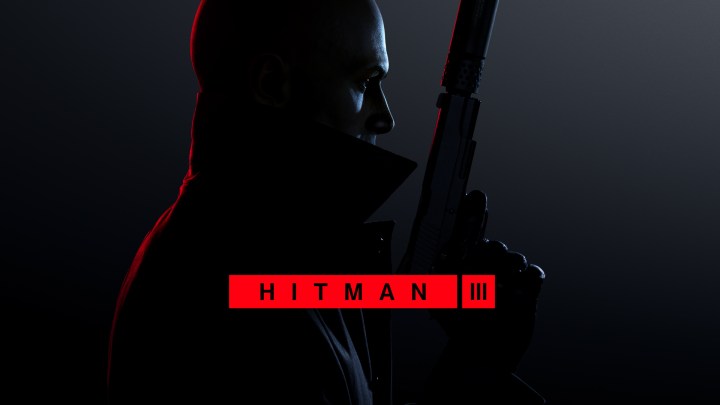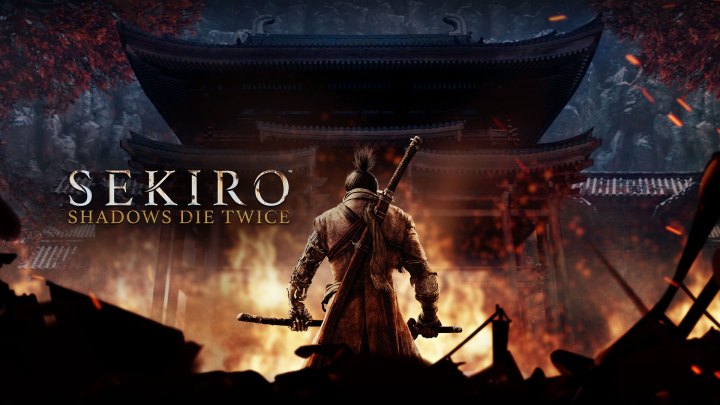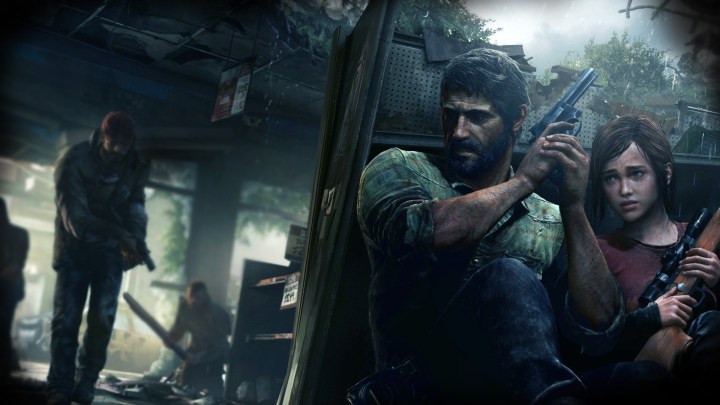The stealth video game genre is one that has gained a lot of traction in recent years. While it’ll likely never reach the heights of shooters, sports games, or action adventures, the stealth genre is often home to some of the most inventive video game experiences out there.
They hinge on superb game design that usually allows for tremendous experimentation that makes you think. Sometimes stealth games are an amalgamation of genres, blending horror or action with slower, more methodical gameplay. There’s something so satisfying about studying your enemies’ moves, while carefully attempting to navigate throughout each level undetected. However you slice it, stealth games are often smart and inventive.
Since this genre is composed of so many outstanding games, we’ve decided to take a look at some of the best it has to offer. From newer releases to older titles from the PS2 era, let’s take a look at the best stealth games of all time.
Recommended reading:
- The best free-to-play games for 2021
- The best survival games for the PS4
- The best co-op games for 2021
Hitman 3

Kicking things off is a more recent entry, Hitman 3. Without spending all day gushing about this game (because we totally could do that), let’s briefly cover why it’s so special. For starters, the game is composed of many large-scale levels that typically consist of multiple floors across various real-world locations (like Dubai or England). Each stage requires you to eliminate at least one target, but how you go about that is entirely up to you.
Want to walk in, guns blazing with no regard for security or discretion? Go for it. Or perhaps you’d rather stage the scene to look like an accident. You can absolutely rig a metal walkway so your target tumbles below. This gives the game so much replayability and rewards you for experimenting with the numerous ways to complete each objective. From a design point of view, Hitman 3 is hard to top. Better yet is playing it in PSVR.
Metal Gear Solid 3: Snake Eater

When it comes to famous stealth video game series, it doesn’t get any bigger than Metal Gear Solid. The first game is important and is worth playing, but with it being an older PlayStation game, time hasn’t been as kind to it. That’s why we recommend the third installment, Metal Gear Solid 3: Snake Eater. What’s cool about this game is that it takes place first chronologically, meaning you can definitely get away with playing it before the others. In this game, you’re sent to a deadly jungle full of crocodiles, bats, and of course, snakes — all of which can cause damage if you aren’t careful.
One of Snake Eater’s most memorable gameplay mechanics is its camouflage system, which requires you to wear different clothing depending on your environment to conceal yourself more effectively. For instance, the Animal camo works well around grass, while the Black camo is ideal for the dark. This, when combined with its deep (and somber) story, add up to a wildly experimental game that stands the test of time more so than the first installment.
Dishonored 2

Dishonored 2 may very well be the most underrated entry on this list. This game and its predecessor, Dishonored, give you a wonderfully crafted playground to explore, with lots of options for getting past each obstacle. While the first entry was beloved, the second game gets a ton of praise, particularly due to its two main characters, Emily and her father Corvo.
You can choose to play through the game with either character, and each of them has unique abilities that warrant a second playthrough with the other. However you choose to get through the game, lethally or non-lethally, there’s lots to love in Dishonored 2. Will you sneak past your enemies or will you attack them Rambo style? The choice is yours.
Deus Ex: Mankind Divided

You don’t see stealth RPGs too often, but that’s exactly what you get with Deus Ex: Mankind Divided. One of the best things about this game is how it ties your character’s upgrades to the level design itself. You’ll find augments that enhance your hacking abilities to manipulate windows or grates, opening up new possibilities for completing your objective.
This encourages experimentation, not just from an exploration point of view, but with its upgrades as well. And let’s be honest — who wouldn’t want to play as Adam Jensen, a cybernetically enhanced agent with an awesome suit? Of course, with this being a stealth game, you’ve got plenty of options for approaching the game’s obstacles — each with pros and cons that you’ll want to consider. In many ways, Deus Ex inspired CD Projekt RED’s Cyberpunk 2077, and you can see that clearly in this game.
Tom Clancy’s Splinter Cell Blacklist

For some reason, publisher Ubisoft doesn’t seem too interested in bringing back the Splinter Cell series. The most recent entry, Splinter Cell: Blacklist has a high-stakes story, a memorable and likable cast of characters, and some of the best stealth gameplay the genre has seen.
As Sam Fisher, you have tons of gadgets at your disposal, such as proximity mines and firearms, as well as non-lethal devices like a taser. With that in mind, you’re able to complete the game without lethally eliminating your opponents, and doing so gives you a nice challenge instead of simply blasting through the campaign aggressively. It’s stealth gameplay at its finest, so if you’re wanting a more realistic take on the genre, this is not one to skip.
Alien Isolation

As one of the leading examples of survival horror stealth, Alien Isolation has a sizable fan base, thanks to its terrifying atmosphere and ability to keep you on the edge of your seat. The idea of having to navigate through a large space vessel like the Sevastopol while avoiding an ever-present Xenomorph is absolutely horrifying and is part of why this game works so well.
It’s almost like Resident Evil 3: Nemesis, in that you’re constantly being stalked by a huge, opposing force. Alien Isolation doesn’t have a ton of combat, and instead emphasizes stealth gameplay and exploration as a means to drive it forward. You’re often better off sneaking around your enemy rather than taking them head-on, though the method feels rewarding either way. For that, it deserves a spot on this list.
Metal Gear Solid V: The Phantom Pain

For our second Metal Gear Solid entry on this list, we wanted to touch on the fifth numbered installment, Metal Gear Solid V: The Phantom Pain. We fully recognize that this game is flawed and, in some ways, unfinished, but when it comes to gameplay, The Phantom Pain is in a league of its own. Much like Hitman 3, this game allows you to tackle objectives in a variety of ways, but adds an open world to the mix. Because of that, the possibilities of how you finish each mission are nearly endless, thanks to the many systems in place.
You can use your environment and gadgets to distract your enemies, which can alter the course of how the mission plays out, or you can sneak through without even touching anyone. Since the open world is a huge factor in this game, you’ve got multiple ways to get around, including cars, tanks, and via horseback. As long as you aren’t expecting a cohesive story, The Phantom Pain will be up your alley if you’re a fan of sandbox-style stealth games.
Mark of the Ninja

The majority of this list is composed of realistic games in 3D perspective, but Mark of the Ninja stands on its own as a 2D stealth platformer. That’s right, this game takes the stealth genre to new heights, and it does so in 2D, which is extremely impressive. Part of what makes this game so fun is the way it rewards you for effectively planning your route.
You’re able to see into the rooms ahead, giving you plenty of information to figure out how to approach each section. If your plan goes awry, it isn’t the end of the world, but it’s immensely satisfying when things go right. Thanks to Mark of a Ninja’s clear UI, it’s very easy to tell whether an enemy can see you, and where you need to go. It originally launched for Xbox 360 in 2012 but was remastered for PS4, Xbox One, and Nintendo Switch in 2020.
Invisible Inc.

Serving as one of the more unique entries on this list, Invisible Inc. is a turn-based tactical stealth game presented from a top-down isometric view. Based on that description alone, it might already have your attention. On top of that, each level is randomly generated, meaning no two runs are the same.
Each party member you bring with you has various augments that work for various situations, giving you agency with how you choose to build your squad. Invisible Inc. has a balanced difficulty that feels fair. Even if you get caught off guard, you can utilize the rewind feature to start over from the beginning of your turn. This limited-use ability alleviates some of the frustrations that come with turn-based tactics games, making it easier to get through.
Sekiro: Shadows Die Twice

Once again, here we have a game that is a mixture of genres, effectively blending stealth with intense skill-based action combat. In Sekiro: Shadows Die Twice, most of what you’ll be doing is taking out enemies via hand-to-hand combat, but it does also have some nifty stealth sequences that are worth discussing. In fact, a lot of the game can be played stealthily if you so choose, rewarding players for being patient. Since the combat is so skill dependent, it’s typically beneficial to sneak past enemies rather than fighting them.
Sekiro comes to us from veteran Souls developer FromSoftware, and you can definitely tell, based solely on its difficulty. When implementing stealth, you can eliminate enemies quickly and efficiently, clearing the path ahead without getting overrun. Though, if you do have to take on an opponent head-to-head, you’ll find the combat to be complex and challenging, giving you the best of both worlds.
Tenchu: Wrath of Heaven

Before there was Sekiro: Shadows Die Twice, there was the Tenchu series, which clearly share a lot of the same DNA. In fact, (in Japan) FromSoftware actually published this entry, Tenchu: Wrath of Heaven, a game that launched in the spring of 2003. Wrath of Heaven is the third entry in the series, following a similar format as before. In it, you play as a number of ninja characters who must stick to the shadows to get through levels undetected. The better your performance, the higher your rank at the end of a level — plus, better performance nets you with more rewards such as items to use.
It’s this system that makes the stealth gameplay so rewarding. You’re encouraged to get through without being seen. You can certainly engage enemies head on, and if you do, it works well still, but the main idea is to remain hidden within the shadows — and it does this exceptionally well. Wrath of Heaven might not hold up as well in 2021, but it’s still a blast, and it paved the way for other ninja games that came after.
The Last of Us

We recognize that The Last of Us isn’t primarily defined as a stealth game, but when you consider the moment-to-moment gameplay often requires you to sneak around enemies, it’s hard to classify it any other way. Since it’s first and foremost a survival horror game, it’s common for you to be low on supplies as you play, so your best course of action is typically to avoid detection to preserve ammo.
This design decision adds to the tension, because being caught could mean having to use precious resources that you might want to save for later. All of this is tied to one of the most iconic video game stories in history. The story of Joel and Ellie is tragic and monumental in the gravity it holds. That story is expanded upon in the sequel, The Last of Us Part II. While that game was a bit more divisive among fans, it’s still absolutely worth checking out.



